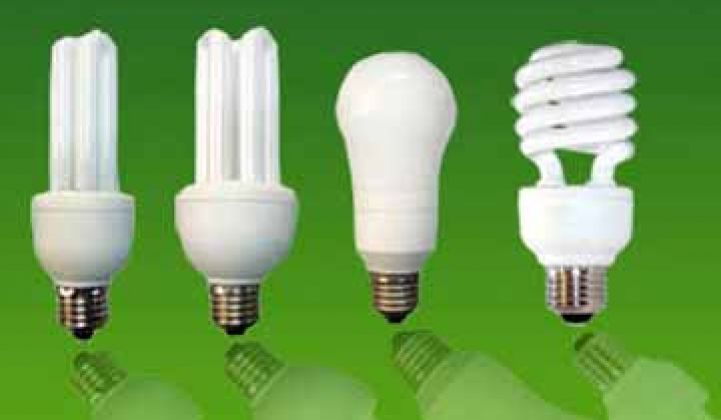Get excited: October is Energy Awareness Month. Certain utilities, retailers and government offices are all making efforts to teach Americans about the benefits of energy efficiency.
The problem, however, is that it’s boring. I’ve had more fun celebrating National Bubble Wrap Appreciation Day, even when there’s no bubble wrap around. With all the talk about how to engage customers, this paltry effort is not helping, despite being in its fifteenth year. A recent study by Lawrence Berkeley National Laboratory found that what really gets people engaged when it comes to slashing energy use is aggressive marketing campaigns. An aggressive campaign this is not.
First of all, electricity bills drop significantly in October. While some pilot programs, like PowerCents DC, have shown that consumers are interested in even minor bill savings (think the cost of a tall Starbucks latte each month), using October, instead of, say, July, is a tough sell.
After a hot summer, the average person is getting back into routines of school and work, not tracking energy savings. While buying a new EnergyStar appliance at Home Depot on a MasterCard means that 10 percent will go to Habitat for Humanity during Energy Awareness Month, most consumers are more likely to wait for Black Friday or post-holiday sales to replace a washing machine.
A better strategy would be for utilities around the country to have marketing pushes to let people know about home energy audits, rebates and tax breaks for retrofits -- or to host series of neighborhood meetings about how to save energy in the home, as suggested by LBNL in its study.
In Washington, D.C., there are near-daily conferences and meetings around energy issues throughout the month, but it doesn’t get the message out beyond the Beltway.
The DOE, in its defense, is allowing people to ask Energy Secretary Steven Chu directly about how to save energy, and which home upgrades and weatherization projects are the best. But the only way you’d know about it, it seems, is if you already hang out on the DOE’s Energy Blog, in which case, you’re probably not the person who needs the advice the most.
Lastly, October is best known as breast cancer awareness month. While every month has endless causes associated with it, October is one of the few months that truly stands out for its dedication to a particular cause (even NFL players are sporting pink).
I like the idea of Energy Awareness Month. I really do. While utilities like PPL are using the month to go into more than 200 schools, I’d like to see a federal push to have an energy competition between schools across the country to cut their usage. Maybe move the month to January or June, when temperatures are pushing toward either end of the spectrum, making for a more natural connection between energy use and awareness.
Lastly, make it at least a little fun. Let people geek out on some of the home energy management systems coming to a big-box store near them in coming years. Have demonstrations that show people how to make the most of a smart thermostat, and then offer a rebate (studies have found that less than 10 percent of people engage with their smart thermostats).
Home Depot and other big-box stores could offer a free CFL with every purchase over a certain amount; MLB could plug the first, second and third base of energy efficiency.
As always, the problem comes down to dollars and marketing, but if states and the federal government want to get serious about increasing efficiency, they’re going to have to get people more interested than they are now.



